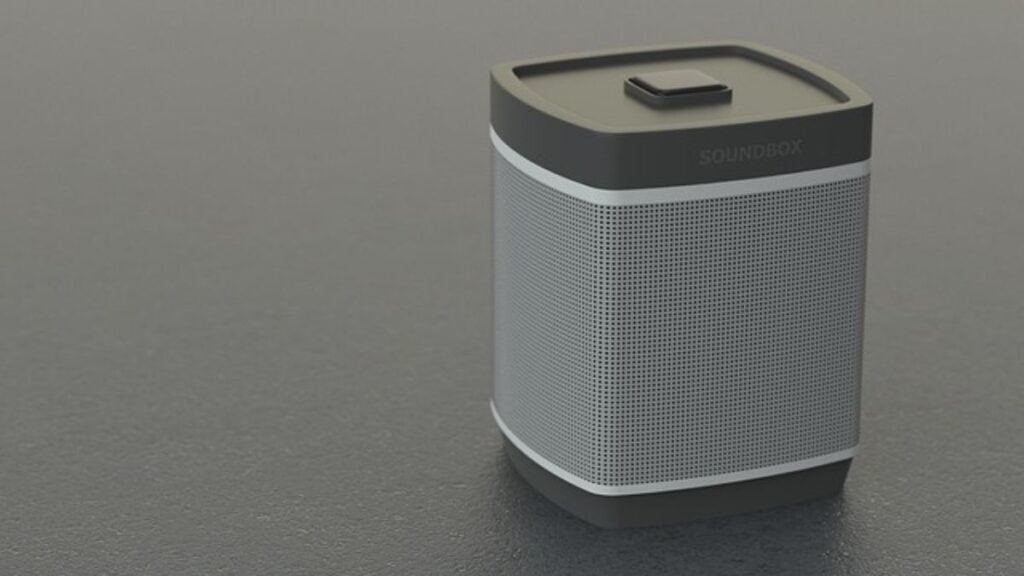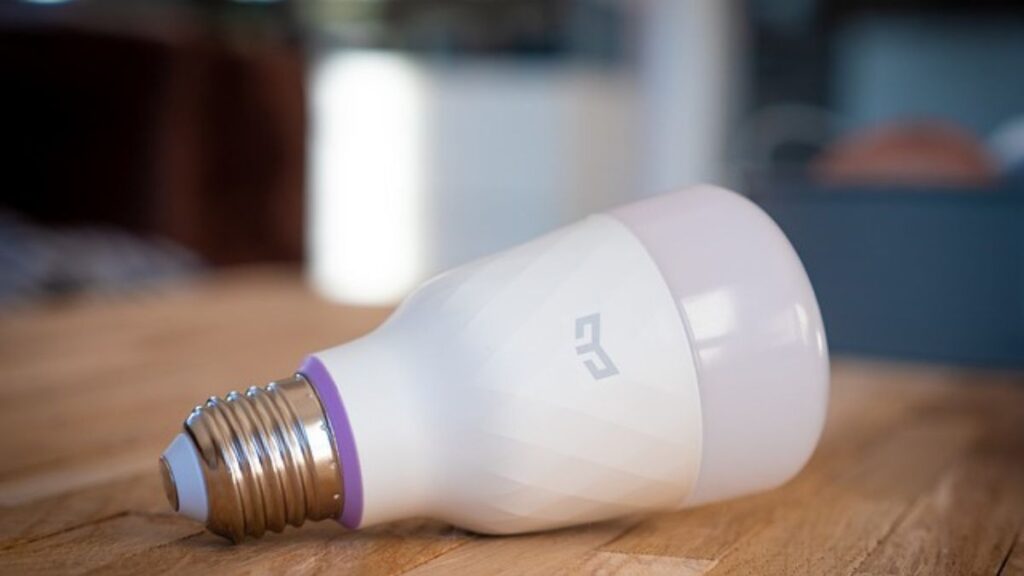Introduction:-
Innovative Living: AI and IoT in Modern Smart Homes

The future of home living is here, and it’s smarter than ever. With the integration of Artificial Intelligence (AI) and the Internet of Things (IoT), modern smart homes are transforming how we live, work, and play. This article explores how AI and IoT work together to create an innovative, efficient, and convenient living environment.
Understanding the Synergy of AI and IoT in Smart Homes
Artificial intelligence (AI) and the Internet of Things (IoT) are two transformative technologies revolutionizing how we live. AI involves machines simulating human intelligence, while IoT refers to the network of physical objects embedded with sensors and software that can communicate with each other and the internet.
In smart homes, AI and IoT converge to create powerful and intelligent systems. Here are some ways they work together:
1. Enhanced Convenience and Automation:
AI algorithms analyze data from IoT devices to learn your habits and preferences. For example, smart thermostats use AI to adjust the temperature automatically based on your daily schedule and preferred settings. This means your home can be comfortably warm when you wake up and cool when you leave for work.
2. Improved Energy Efficiency:
AI and IoT contribute to significant energy savings. Smart lighting systems equipped with motion sensors and AI can adjust brightness based on occupancy and time of day, ensuring lights are not left on unnecessarily. Smart plugs and appliances can be monitored and controlled remotely, allowing you to turn off devices you accidentally left on.
3. Enhanced Security:
AI-powered security cameras and IoT devices provide robust home security solutions. Cameras with AI can differentiate between people, pets, and objects, reducing false alarms. Smart locks and doorbells equipped with AI can recognize familiar faces and provide notifications when an unknown person is at your door.
4. Personalized Entertainment:
AI and IoT make entertainment systems smarter and more personalized. Voice assistants can curate playlists, recommend movies, and control smart TVs based on your preferences. Integration with IoT devices means you can control your entertainment system with a simple voice command.
5. Health and Wellness Monitoring:
Smart homes equipped with AI and IoT can also contribute to health and wellness. Smart beds can track your sleep patterns, while AI analyzes the data to provide personalized sleep recommendations. IoT-enabled fitness equipment can monitor workouts and provide real-time feedback, helping you stay on track with your fitness goals.
Real-World Applications:
Companies such as Nest, Ring, and Philips Hue are at the forefront of integrating AI and IoT in smart homes. Their products include smart thermostats, doorbells, cameras, and lighting systems that use AI to improve comfort, energy efficiency, security, entertainment, and health.
Future Prospects:
The future of AI and IoT in smart homes looks even more promising. We can expect more seamless integration, where devices not only respond to commands but also anticipate our needs. Imagine a home that prepares your morning coffee as your alarm goes off, starts a hot shower, and gives you a weather update as you get ready for the day.
How do AI and IoT improve home security?
Artificial Intelligence (AI) and the Internet of Things (IoT) have revolutionized home security, providing intelligent, automated, and integrated solutions that enhance safety and protection. Here’s how these technologies collaborate:

- Smart Surveillance Cameras:
- AI-Powered Analytics: AI-enabled security cameras differentiate between motion types, reducing false alarms and delivering relevant alerts.
- Facial Recognition: AI identifies familiar faces and detects unknown ones, alerting homeowners to potential intruders.
- Intelligent Alarm Systems:
- Motion Detection: IoT motion sensors detect unusual movements, and AI analyzes patterns to determine threats.
- Automated Responses: AI can lock doors, alert security services, or activate other measures upon detecting a threat.
- Smart Doorbells and Locks:
- Video Doorbells: AI-powered doorbells identify visitors, provide video feeds, and allow remote communication.
- Smart Locks: IoT smart locks offer remote control, and AI manages access based on facial recognition or codes.
- Comprehensive Monitoring Systems:
- Integrated Devices: IoT integrates various security devices, and AI oversees the network for seamless operation.
- Real-Time Alerts: AI processes sensor data, providing real-time alerts about security breaches or unusual activities.
- Automated Home Management:
- Routine Learning: AI learns daily routines and identifies deviations that might indicate a security threat.
- Energy Management: Smart energy management systems detect when no one is home, enhancing security by ensuring proper home securing.
- Voice-Activated Security:
- Voice Assistants: Devices like Amazon Alexa or Google Assistant control security systems through voice commands.
- Emergency Commands: Homeowners can use voice commands to call for help or activate security protocols in emergencies.
- Cloud-Based Surveillance:
- Remote Access: IoT devices store data in the cloud, allowing remote access to security feeds and controls.
- Data Analysis: AI analyzes data to provide insights and improve security measures over time.
- Predictive Security:
- Threat Prediction: AI algorithms predict potential threats by analyzing data patterns and trends.
- Learning and Adaptation: AI continuously learns from new data, improving its accuracy in detecting and responding to threats.
By combining AI’s analytical capabilities with IoT’s connectivity, home security systems become more intelligent, responsive, and effective. This integration not only enhances protection but also provides peace of mind to homeowners, knowing their homes are safeguarded by cutting-edge technology.
What are some popular smart home devices Related to AI And IOT?
In the realm of smart home technology, AI and IoT converge to deliver an array of devices that enhance convenience, security, energy efficiency, and overall home automation. Here are some notable examples:

1. Smart Speakers and Voice Assistants:
- Amazon Echo (Alexa): Offers hands-free control of smart home devices, including lights, thermostats, and locks, through voice commands.
- Google Nest Hub (Google Assistant): Similar to Amazon Echo, it provides voice control, supports a vast range of smart devices, and features a visual interface with a touchscreen.
2. Smart Thermostats:
- Nest Learning Thermostat: This AI-powered thermostat learns your preferences and schedule, optimizing heating and cooling to save energy.
- Ecobee SmartThermostat: Features built-in Alexa voice control, room sensors to address temperature variations, and energy-saving automation.
3. Smart Lighting Systems:
- Philips Hue: A versatile lighting system allowing remote control, scheduling, and customization of lighting color and intensity via a mobile app or voice assistant.
- LIFX Smart Bulbs: Similar to Philips Hue, these bulbs offer Wi-Fi connectivity, a wide color spectrum, and adjustable brightness.
4. Smart Security Cameras and Doorbells:
- Ring Video Doorbell: Provides real-time video feeds, motion detection, and two-way audio, enabling homeowners to interact with visitors remotely.
- Arlo Pro Cameras: These wireless security cameras offer HD video, night vision, motion alerts, and cloud storage options, enhancing home security through continuous monitoring.
5. Smart Locks:
- August Smart Lock: Supports keyless entry, remote locking/unlocking, and integration with voice assistants and other smart home systems.
- Yale Assure Lock: A smart lock with similar features, including a touchscreen keypad for added convenience.
6. Smart Plugs and Outlets:
- TP-Link Kasa Smart Plug: Allows for remote control of appliances, scheduling, and integration with voice assistants for hands-free operation.
- Amazon Smart Plug: Integrates seamlessly with Alexa for voice-controlled management of connected devices.
7. Smart Appliances:
- Samsung Family Hub Refrigerator: Features a touchscreen interface, internal cameras for remote content viewing, and integration with other smart home devices.
- LG Smart Washer and Dryer: These appliances offer remote control, monitoring, and notifications through smartphone apps.
8. Smart Home Hubs:
- Samsung SmartThings Hub: Connects and manages a wide range of smart devices from various brands, facilitating integrated automation and control.
- Apple HomePod: Works with Apple’s HomeKit to control smart home devices using Siri voice commands.
9. Smart Blinds and Curtains:
- IKEA Fyrtur Smart Blinds: Automated blinds controllable via remote, smartphone app, or voice assistant, providing scheduled and automated operation.
- Lutron Serena Shades: Customizable smart shades that integrate with voice assistants and other smart home systems for automated control.
10. Smart Health and Wellness Devices:
- Withings Sleep Analyzer: A sleep tracking mat that provides detailed sleep analysis and integrates with health apps and smart home systems to improve sleep quality.
- Fitbit Aria Smart Scale: Tracks weight, body fat percentage, and BMI, syncing data with fitness apps and health ecosystems.
These devices exemplify the powerful combination of AI and IoT in creating a connected, automated, and intelligent living environment. As technology advances, the range and capabilities of smart home devices will continue to expand, further enhancing convenience, security, and efficiency in our homes.
Conclusion
Innovative living through the integration of AI and IoT in modern smart homes is revolutionizing our daily lives. This synergy offers unparalleled convenience, efficiency, security, and personalization. As technology continues to advance, our homes will become even smarter, creating an environment that adapts to our needs and enhances our lifestyle. Embracing this technology today sets the stage for a more connected and intelligent tomorrow.
References
Books:
- “Building Smart Homes with Raspberry Pi Zero” by Marco Schwartz
- This book explores DIY smart home projects using Raspberry Pi and includes discussions on integrating AI and IoT technologies.
- “Smart Home Automation with Linux and Raspberry Pi” by Steven Goodwin
- Focuses on creating smart home systems using Linux-based platforms like Raspberry Pi, covering IoT integration and automation techniques.
Academic Articles and Journals:
- IEEE Internet of Things Journal
- A peer-reviewed journal that publishes articles on various aspects of IoT, including smart home technologies and AI integration.
- Website: IEEE IoT Journal
- Journal of Ambient Intelligence and Humanized Computing
- Covers research on ambient intelligence, smart environments, and human-computer interaction, including applications in smart homes.
- Website: Journal of Ambient Intelligence and Humanized Computing







